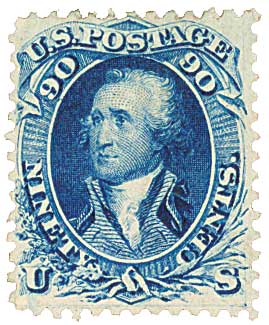
# UX167 FDC - 1993 19c Postal Card - Wern Building, William & Mary College
College Of William And Mary

On February 8, 1693, a royal charter officially established the College of William and Mary. Today it’s the second-oldest college in America (behind Harvard).
Virginia’s first English settlers arrived in 1607 at Jamestown. One of their early goals was to establish a school for Native Americans and the sons of colonists. Plans for such a school were first drawn up in 1618.

Funding and plans to build the school progressed for a few years, but then the school’s planner was killed and an Indian uprising broke out. The school was abandoned altogether in 1624 when the charter was revoked and Jamestown became a royal colony. Little progress would come over the next several decades.

Then in 1690, a new proposal for the college emerged. The General Assembly tasked Reverend James Blair, a representative of the Bishop of London, with traveling to England to meet with the king and queen and request a grant for a charter. Blair succeeded in his mission, and on February 8, 1693, King William III and Queen Mary II granted a royal charter. The document officially established the College of William and Mary in Virginia to “make, found, and establish a certain Place of Universal Study, a perpetual College of Divinity, Philosophy, Languages, and the good arts and sciences…to be supported and maintained, in all time coming.”

The charter made Blair the school’s first president and funding was provided by tobacco taxes and profits from the Surveyor-General’s Office. Land for the school was purchased in December 1693 in Middle Plantation (later renamed Williamsburg). The school operated out of temporary buildings while new ones were constructed in 1794. As Williamsburg served as the capital of Virginia from 1699 to 1780, the school served as a law center with many lawmakers using the buildings.

While the initial goal of educating Native Americans never came to be, the College of William and Mary educated many notable Americans in its early years. This included three future presidents; Thomas Jefferson, James Monroe, and John Tyler. Other prominent students included Henry Clay, John Marshall, and George Wythe, who would later become the nation’s first law professor.
The College of William and Mary severed ties with England during the Revolutionary War and the Divinity and Indian Schools were closed. The school closed during the Civil War because so many students enrolled in the Confederate Army. The buildings were used as a Confederate barracks and later a hospital used by both sides. The school reopened in 1865, but suffered financially and closed in 1881. The state eventually granted funds and the college reopened in 1888. Three decades later, the school was one of the first in Virginia to admit women.
College Of William And Mary

On February 8, 1693, a royal charter officially established the College of William and Mary. Today it’s the second-oldest college in America (behind Harvard).
Virginia’s first English settlers arrived in 1607 at Jamestown. One of their early goals was to establish a school for Native Americans and the sons of colonists. Plans for such a school were first drawn up in 1618.

Funding and plans to build the school progressed for a few years, but then the school’s planner was killed and an Indian uprising broke out. The school was abandoned altogether in 1624 when the charter was revoked and Jamestown became a royal colony. Little progress would come over the next several decades.

Then in 1690, a new proposal for the college emerged. The General Assembly tasked Reverend James Blair, a representative of the Bishop of London, with traveling to England to meet with the king and queen and request a grant for a charter. Blair succeeded in his mission, and on February 8, 1693, King William III and Queen Mary II granted a royal charter. The document officially established the College of William and Mary in Virginia to “make, found, and establish a certain Place of Universal Study, a perpetual College of Divinity, Philosophy, Languages, and the good arts and sciences…to be supported and maintained, in all time coming.”

The charter made Blair the school’s first president and funding was provided by tobacco taxes and profits from the Surveyor-General’s Office. Land for the school was purchased in December 1693 in Middle Plantation (later renamed Williamsburg). The school operated out of temporary buildings while new ones were constructed in 1794. As Williamsburg served as the capital of Virginia from 1699 to 1780, the school served as a law center with many lawmakers using the buildings.

While the initial goal of educating Native Americans never came to be, the College of William and Mary educated many notable Americans in its early years. This included three future presidents; Thomas Jefferson, James Monroe, and John Tyler. Other prominent students included Henry Clay, John Marshall, and George Wythe, who would later become the nation’s first law professor.
The College of William and Mary severed ties with England during the Revolutionary War and the Divinity and Indian Schools were closed. The school closed during the Civil War because so many students enrolled in the Confederate Army. The buildings were used as a Confederate barracks and later a hospital used by both sides. The school reopened in 1865, but suffered financially and closed in 1881. The state eventually granted funds and the college reopened in 1888. Three decades later, the school was one of the first in Virginia to admit women.












